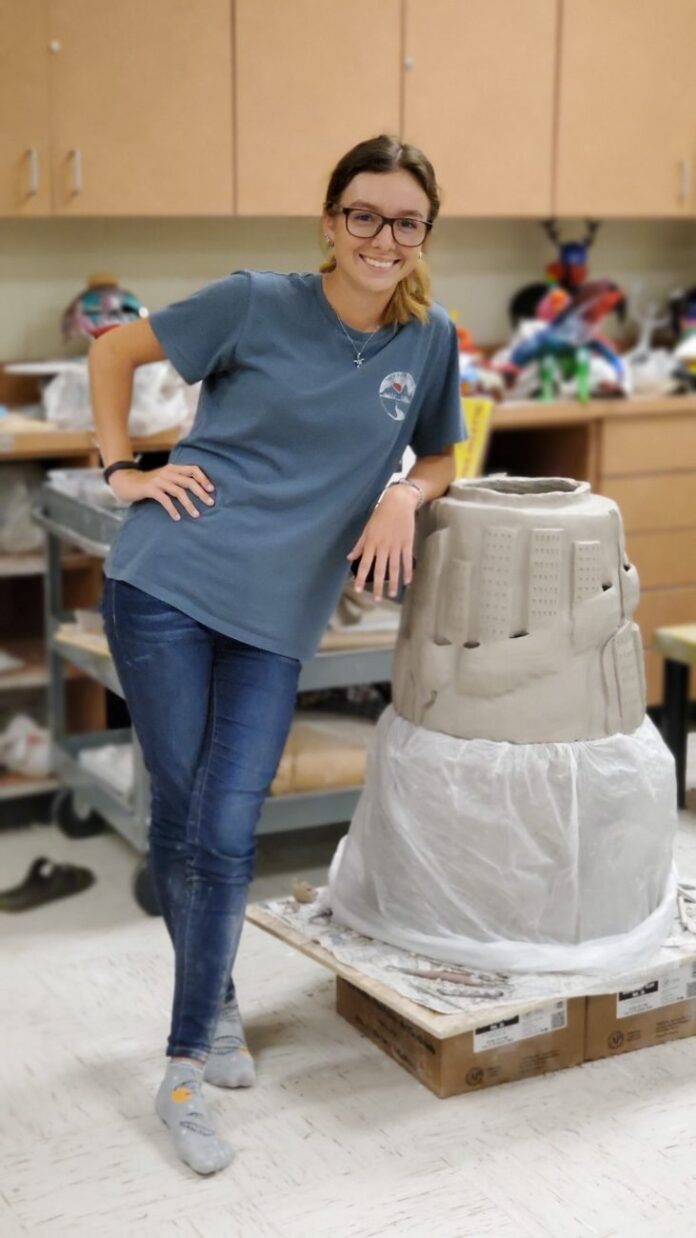HARLINGEN — It was to be a monument to her ingenuity, a testament to her originality, evidence of her innovative powers.
Instead, Cara Ingram’s half-finished clay fountain is a shrine to the times in which she lives, a representation of the changes she and her classmates have faced, a symbol of her resilience.
“ I’d been working on it since January of this year,” said Cara, 17, a senior at Harlingen High School South.
“ It was for my 3D art portfolio, for the AP College Board exam,” she said. “It was really a work to kind of challenge me. It was probably the biggest sculpture that Mr. Leal and Mr. Godinez had attempted to do with just clay.”
Her instructor, Mario Godinez, concurred. He’s only taught the class for about two years but he was once a student in the class of Carlos Leal. Both agreed the fountain was an unusually well-developed project.
“ Mr. Leal has been there at least 30 years,” Godinez said. “He was helping us and guiding me and Cara with the project. This project was going to be one of the biggest sculptures that any student had done. I did feel disappointed that we didn’t get to see this built.”
Cara had spent long hours on the 3D project, which was to be in six layers depicting different levels of creation. She showed her dedication by coming in on Saturdays under the direction of her instructor, Mario Godinez.
“ Cara was doing this beautiful fountain and it was going to measure easily five feet,” Godinez said. “She was doing it in sections, and she was using ceramic and she was using the coil method. It was going to be an environmental piece.”
He spoke enthusiastically about Cara’s project, explaining how the first level would represent the center of the Earth, the second would be the surface with trees, and the third would be the sky.
“ She did the first and the second section, we started on the third section, and all this happened,” he said. “We weren’t able to go back to school.”
Godinez expressed admiration for not only her talent but her dedication. She was one of only a few students coming in on Saturdays; many students had projects in mid-formation when they left for Spring Break. Little did they know they wouldn’t see them again for … they have yet to return to those projects.
“ Right when Spring Break was about to end, they started announcing that it was going to be extended and then everything started going downhill,” Cara said. “I was really bummed out as I’m sure a lot of people were because clay.”
She recalled receiving the news of the campus closings with great duress, fearing their clay projects would dry out and they would be unable to fix them. However, for her, the incomplete project bears discussion about her capacity for adjustment, and something more.
“ The best thing for me about art is the process of making it, not just the finished product,” she said. “So just to have worked on it for as long as I could is really great.”
She and her classmates had planned to turn in the project to the College Board as part of a portfolio to get college credit. Now they’ve had to completely change their theme and build sculptures from found objects.
“ I just collected a lot of vintage objects around my house,” she said. “You just have to kind of put them together in an artsy meaningful way.”
Perhaps from the chaos of these troubled times, young art students like Cara are finding new and innovative ways to find new meaning in their artistic lives.





